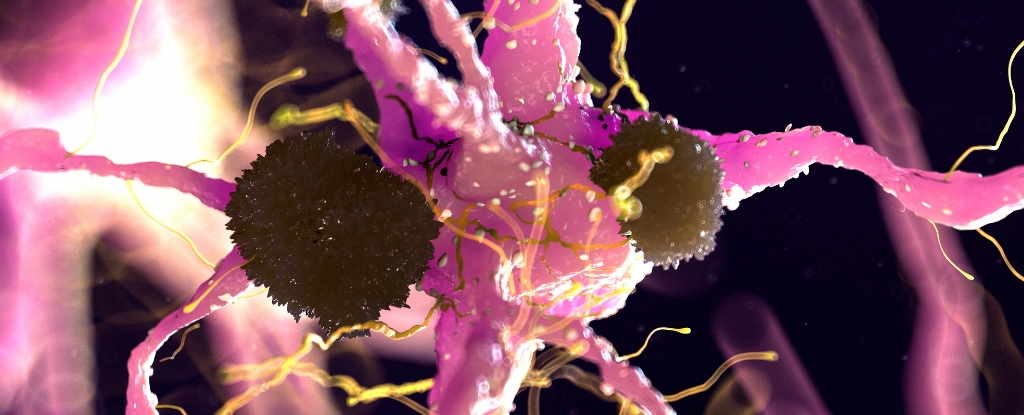Summary: A new study shows that misophonia, strong negative reactions to certain sounds, is closely linked to cognitive and emotional inflexibility. Participants with high misophonia severity struggled to shift between emotional tasks and reported rigid thinking in daily life.
The condition was also strongly associated with rumination, or repetitive negative thinking, which may drive or exacerbate distress. These findings suggest that misophonia is more than sensory—it involves deeper issues of emotion regulation and executive function.
Key Facts
- Switching Difficulty: Individuals with misophonia showed reduced accuracy in tasks requiring emotional set-shifting, even when reaction times were unaffected.
- Cognitive Inflexibility: Self-reported cognitive rigidity was significantly correlated with misophonia, independent of depression, anxiety, and hyperacusis.
- Rumination Link: Multiple forms of rumination—general, brooding, and anger—were strongly associated with misophonia severity and mediated the link with cognitive inflexibility.
Source: Neuroscience News
Misophonia, the intense emotional response to everyday sounds like chewing or sniffing, has long been viewed as a sensory condition. But new research reveals it may run much deeper—tied not just to sound sensitivity, but to how the brain regulates emotion, attention, and thought.
A new pre-registered study has found that individuals with misophonia not only struggle with emotional reactivity to triggering sounds, but also exhibit significant impairments in both cognitive and affective flexibility—the brain’s ability to shift focus, regulate emotional response, and move between mental tasks in the face of emotionally charged stimuli.
The study also found that this rigidity is closely linked to rumination, a repetitive pattern of negative thinking seen in many forms of mental distress.
These findings offer a crucial window into misophonia’s cognitive profile, highlighting that what’s often assumed to be “just” a reaction to sound may in fact involve broader, transdiagnostic processes of emotional regulation and executive function.
Beyond the Sound: The Brain’s Role in Misophonia
Misophonia, affecting an estimated 5% to 20% of the population, is characterized by extreme discomfort or even rage triggered by specific sounds, often involving orofacial human noises (like chewing or throat-clearing). Though not yet listed in the DSM-5 or ICD-11, misophonia is increasingly recognized as a condition with serious life impacts—ranging from social avoidance to workplace difficulties and emotional distress.
Yet, until now, misophonia has largely been approached through the lens of auditory processing or sensory hypersensitivity. What this new study reveals is that underlying cognitive and emotional traits—namely inflexibility and rumination—may be critical in shaping misophonic responses.
The researchers used the Memory and Affective Flexibility Task (MAFT), a novel neurocognitive paradigm designed to measure how participants shift between memory-based and emotionally driven tasks. Unlike traditional tasks that use neutral stimuli, the MAFT incorporates emotionally evocative images to better capture real-world emotional demands.
Affective Flexibility and the Cost of Switching
One of the core findings was that individuals with clinically significant misophonia showed reduced affective flexibility. Specifically, participants with higher misophonia severity performed worse on switch trials where they had to rapidly shift from one emotional evaluation to another—such as reappraising whether an image was emotionally positive or negative.
This difficulty wasn’t simply about slow reaction times; in fact, reaction time was not correlated with misophonia severity. Instead, the impairment was in switch accuracy—indicating a breakdown in the ability to shift cognitive sets in response to emotionally salient stimuli.
Importantly, these flexibility deficits persisted even after controlling for general cognitive rigidity, anxiety, depression, and hyperacusis, suggesting a specific and independent role for affective switching in misophonia.
Cognitive Inflexibility and Broader Mental Rigidity
Alongside behavioral task data, participants also completed the Detail and Flexibility Questionnaire (DFlex)—a validated self-report measure of cognitive flexibility. Here too, the results were striking: misophonia severity was strongly and positively associated with cognitive inflexibility.
In other words, individuals with misophonia not only struggled with moment-to-moment emotional shifts in a lab task—they also reported a trait-like rigidity in daily life. These patterns mirror cognitive difficulties seen in disorders commonly comorbid with misophonia, such as OCD, autism spectrum disorder, and PTSD.
Yet, affective flexibility and cognitive flexibility did not correlate with one another, reinforcing the idea that they are distinct processes—each contributing independently to the misophonic experience.
Rumination: The Mental Loop That Won’t Stop
If affective inflexibility reflects difficulty shifting emotional gears, rumination is the cognitive trap that keeps people stuck. Defined as repetitive, negative self-focused thought, rumination has long been implicated in depression and anxiety—but this study shows its unique relevance to misophonia.
Participants completed three different rumination scales, measuring general perseverative thinking, brooding, and anger rumination.
All three forms were significantly correlated with misophonia severity—even after controlling for anxiety and depression—suggesting that rumination is not merely a comorbid feature but a potential cognitive driver of misophonic distress.
Interestingly, rumination did not correlate with affective flexibility (as measured by MAFT), but did strongly correlate with cognitive inflexibility—suggesting a shared underlying mechanism.
Mediation analysis revealed that up to 43% of the link between cognitive inflexibility and misophonia could be explained by rumination, pointing to it as a key cognitive mediator.
Clinical Implications: More Than Sound Sensitivity
This study offers a critical reframing of misophonia: not merely as a sensory disorder, but as a condition shaped by fundamental patterns of attention, flexibility, and emotion regulation. The findings raise important questions about how we classify and treat misophonia.
Therapeutic interventions targeting cognitive flexibility and rumination—such as cognitive-behavioral therapy (CBT), mindfulness-based approaches, and metacognitive training—may hold promise for reducing misophonic distress. These methods could help individuals shift away from rigid thought patterns and develop greater emotional adaptability in the face of sensory triggers.
It also emphasizes the need for clinicians to assess for broader executive function difficulties and ruminative tendencies in patients reporting misophonic symptoms. Understanding this broader cognitive-affective profile may help prevent misdiagnosis and enable more tailored interventions.
Toward a New Understanding of Misophonia
By integrating behavioral tasks, self-report measures, and a robust pre-registered design, this study offers one of the most comprehensive looks yet at the cognitive underpinnings of misophonia. The evidence is clear: misophonia involves more than ears—it involves how the brain reacts, regulates, and ruminates.
Future research should further explore these mechanisms using longitudinal designs and clinical samples, as well as investigate whether treating cognitive inflexibility and rumination can reduce symptoms over time.
For those who live with misophonia, these findings may bring hope: not just for understanding, but for interventions that go beyond silencing the world—to helping the mind let go.
Key Questions Answered:
A: Misophonia is a condition where specific sounds trigger intense emotional responses, such as irritation, anxiety, or rage—most often viewed as a sensory processing issue.
A: The study reveals that misophonia is also characterized by difficulty switching between emotional tasks, rigid thinking patterns, and high levels of rumination, suggesting a broader cognitive-emotional basis.
A: Targeting rumination and mental inflexibility through cognitive-behavioral or mindfulness-based therapies may help reduce misophonic distress and improve emotional regulation.
About this misophonia and cognitive neuroscience research news
Author: Neuroscience News Communications
Contact: Neuroscience News
Source: Neuroscience News Communications – Neuroscience News
Image: The image is credited to Neuroscience News
Original Research: Open access.
“Misophonia symptom severity is linked to impaired flexibility and heightened rumination” by Vivien K. Black et al. British Journal of Psychology
Abstract
Misophonia symptom severity is linked to impaired flexibility and heightened rumination
Misophonia is a disorder involving sensitivity to certain sounds and related stimuli.
Here, we explore the relationship between misophonia and affective flexibility, which describes cognitive shifting abilities in the face of emotion-evoking stimuli.
The secondary aim of this study is to test the potential association between misophonia and cognitive flexibility, building upon findings from previous research.
The third objective is to examine the relationship between misophonia and rumination.
One hundred and forty participants completed the Memory and Affective Flexibility Task (MAFT), designed to assess affective flexibility, as well as a battery of self-report measures to evaluate misophonia severity, cognitive flexibility, and rumination.
Results suggested an inverse relationship between affective flexibility as measured by switch accuracy, but not reaction time, and misophonia severity.
Cognitive flexibility was also inversely associated with misophonia severity, but was not attributed to task-based affective flexibility, suggesting two independent constructs both involved in misophonia manifestation.
Rumination associated positively with misophonia severity and inversely with cognitive flexibility, but not affective flexibility.
Taken together, these findings highlight a unique cognitive profile of misophonia, characterized by rigidity at the psychological level through cognitive inflexibility and rumination, as well as at the executive function level in terms of affective switching difficulties.
Source link


